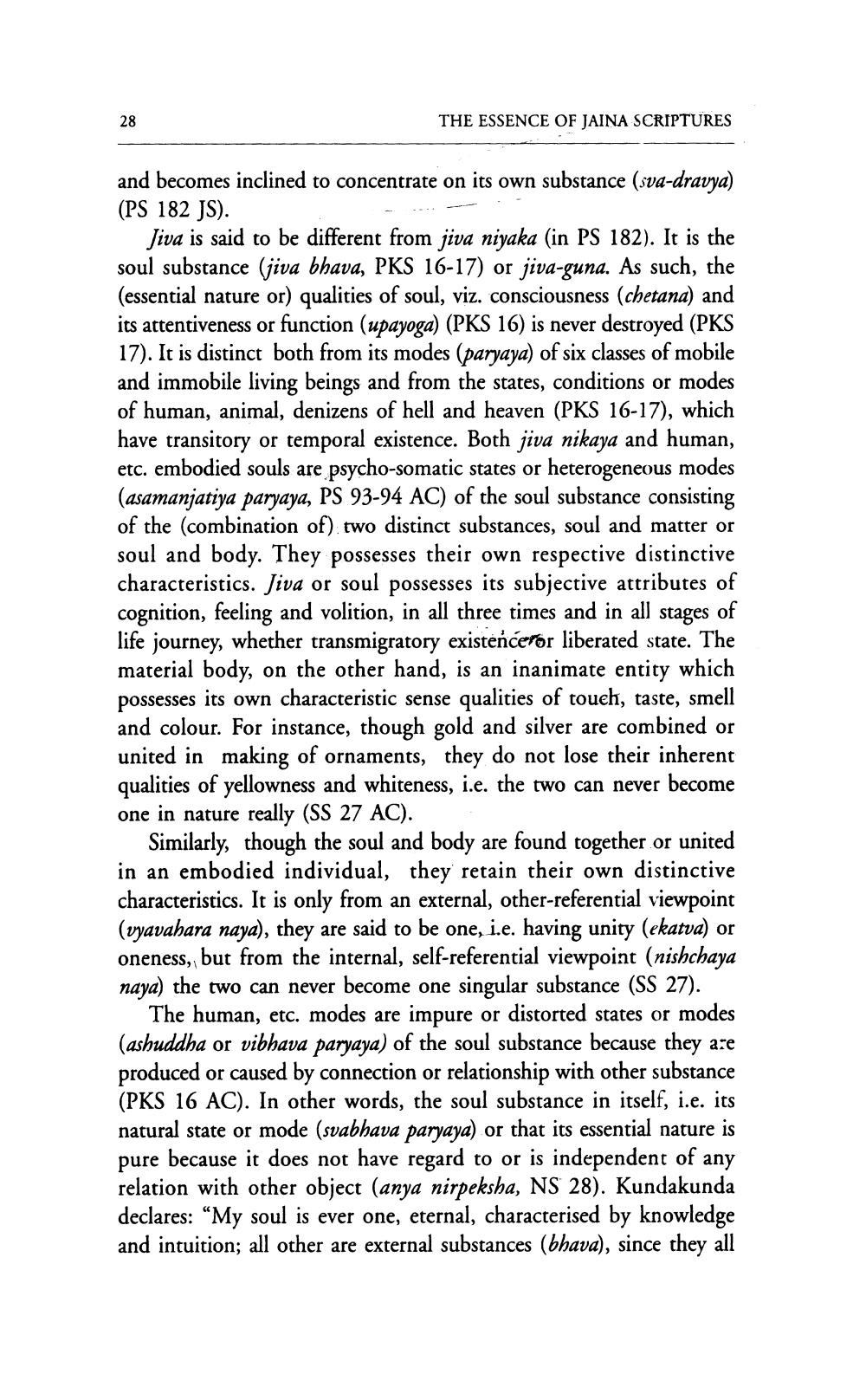________________
THE ESSENCE OF JAINA SCRIPTURES
and becomes inclined to concentrate on its own substance (sva-dravya) (PS 182 JS).
Jiva is said to be different from jiva niyaka (in PS 182). It is the soul substance (jiva bhava, PKS 16-17) or jiva-guna. As such, the (essential nature or) qualities of soul, viz. consciousness (chetana) and its attentiveness or function (upayoga) (PKS 16) is never destroyed (PKS 17). It is distinct both from its modes (paryaya) of six classes of mobile and immobile living beings and from the states, conditions or modes of human, animal, denizens of hell and heaven (PKS 16-17), which have transitory or temporal existence. Both jiva nikaya and human, etc. embodied souls are psycho-somatic states or heterogeneous modes (asamanjatiya paryaya, PS 93-94 AC) of the soul substance consisting of the (combination of) two distinct substances, soul and matter or soul and body. They possesses their own respective distinctive characteristics. Jiva or soul possesses its subjective attributes of cognition, feeling and volition, in all three times and in all stages of life journey, whether transmigratory existenceror liberated state. The material body, on the other hand, is an inanimate entity which possesses its own characteristic sense qualities of touch, taste, smell and colour. For instance, though gold and silver are combined or united in making of ornaments, they do not lose their inherent qualities of yellowness and whiteness, i.e. the two can never become one in nature really (SS 27 AC).
Similarly, though the soul and body are found together or united in an embodied individual, they retain their own distinctive characteristics. It is only from an external, other-referential viewpoint (vyavahara naya), they are said to be one, i.e. having unity (ekatva) or oneness, but from the internal, self-referential viewpoint (nishchaya naya) the two can never become one singular substance (SS 27).
The human, etc. modes are impure or distorted states or modes (ashuddha or vibhava paryaya) of the soul substance because they are produced or caused by connection or relationship with other substance (PKS 16 AC). In other words, the soul substance in itself, i.e. its natural state or mode (svabhava paryaya) or that its essential nature is pure because it does not have regard to or is independent of any relation with other object (anya nirpeksha, NS 28). Kundakunda declares: “My soul is ever one, eternal, characterised by knowledge and intuition; all other are external substances (bhava), since they all




